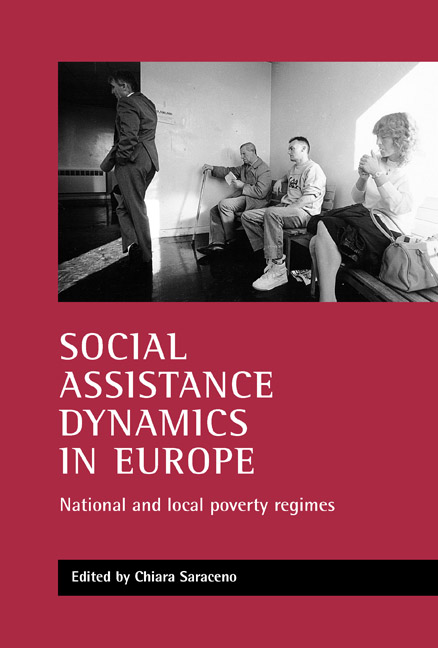Book contents
- Frontmatter
- Contents
- List of figures and tables
- Acknowledgements
- Notes on contributors
- one Introduction: exploring social assistance dynamics
- two Cities as local systems
- three Income support measures for the poor in European cities
- four Why some people are more likely to be on social assistance than others
- five Paths through (and out of) social assistance
- six Deconstructing the myth of welfare dependence
- References
- Appendix Institutional frameworks of income support policies in 13 European cities
- Index
two - Cities as local systems
Published online by Cambridge University Press: 20 January 2022
- Frontmatter
- Contents
- List of figures and tables
- Acknowledgements
- Notes on contributors
- one Introduction: exploring social assistance dynamics
- two Cities as local systems
- three Income support measures for the poor in European cities
- four Why some people are more likely to be on social assistance than others
- five Paths through (and out of) social assistance
- six Deconstructing the myth of welfare dependence
- References
- Appendix Institutional frameworks of income support policies in 13 European cities
- Index
Summary
Local formations, constructions of poverty and policy Implementation
Our comparative analysis of anti-poverty measures and programmes has developed from the ‘regulation’ and ‘constructionist’ approaches (for example, Gough et al, 1997; Paugam, 1999). At the same time, it differs from these in that it focuses not only on cross-country variation, but also within-country variation. It assumes that, a) national systems differ in the degree to which they allow or even incentive variation and, b) intracountry variation is a result of national welfare regimes and also the way patterns of social, economic, demographic and political development at the local level coalesce into recognisable social formations. The interrelationships between the national and local modes of regulation of poverty are depicted in Figure 2.1.
In this chapter, we introduce the local welfare systems of our 13 cities, setting them in their social and historical contexts. Thus, our focus will not be specifically on the income support measures that are at the core of the ESOPO study. These will be analysed in detail in the following chapter. Here, we simply identify those features that render our 13 cities veritable social formations, thus explaining the specific features that distinguish their modes of regulation of poverty vis a vis other cities in the same country, as well as other cities in different countries. The chapter is structured into three parts. In the first, we try to give some methodological indications on how to read the local welfare set-up and its construction, analysing the historical development of the cities with particular regard to the industrial side. In the second part, we describe the current socioeconomic transformations that are creating tension, and the groups at major risk in the various cities. Finally, we consider the local welfare model in each city, looking at how different social actors mix. In the conclusion, we attempt to summarise and interpret local models and welfare strategies, going beyond the local differences.
In order to grasp the structure of local systems, we need to view them within the framework of national models, focusing in particular on how the latter have adapted to the actual social, economic and cultural configuration of specific cities. For this reason, it is important to take into account the various urban traditions.
- Type
- Chapter
- Information
- Social Assistance Dynamics in EuropeNational and Local Poverty Regimes, pp. 35 - 80Publisher: Bristol University PressPrint publication year: 2002
- 1
- Cited by



